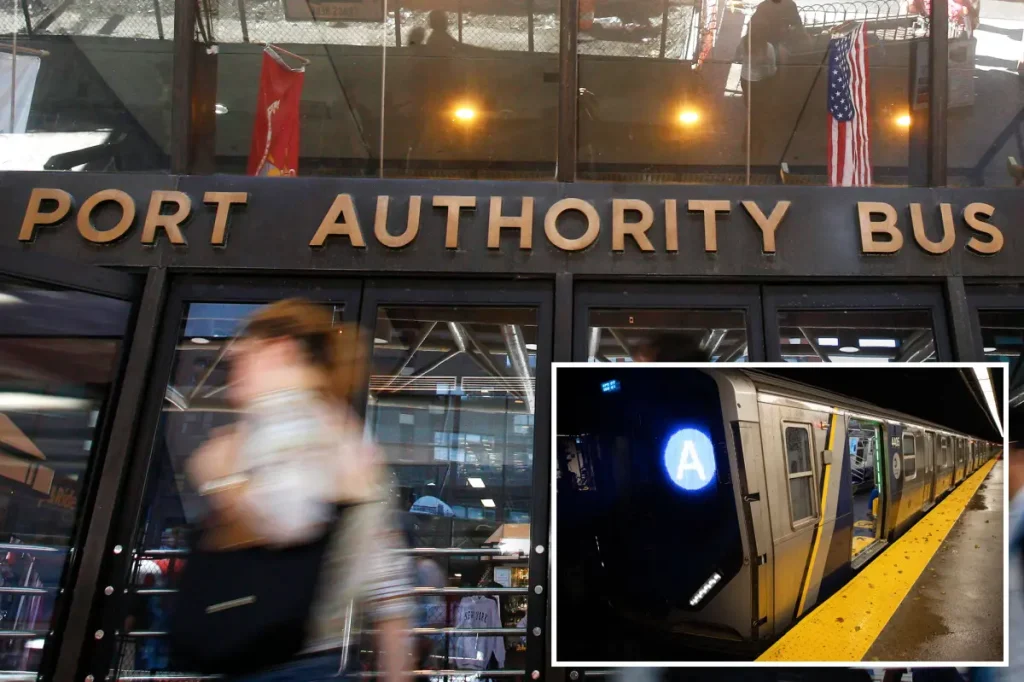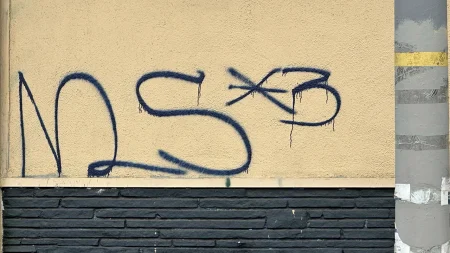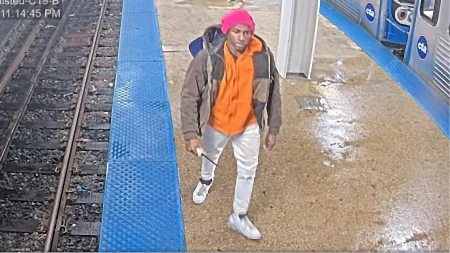Tragic Rush Hour Incident at Port Authority: A Personal Reflection on Mental Health Awareness
On a busy Monday morning, as commuters hurried through their usual routines at the 42nd Street-Port Authority Bus Terminal, tragedy struck when a woman in her sixties lost her life after being hit by a southbound A train. The incident, which occurred just before 7 a.m., brought the bustling hub to a standstill as emergency responders arrived at the scene. Despite their efforts, the woman was found unresponsive on the tracks and pronounced dead at the location. Police sources later indicated they believed the death was a suicide, with no evidence of criminal activity involved. The woman’s identity was not immediately disclosed to the public, respecting the privacy of her family during this difficult time.
This heartbreaking event serves as a somber reminder of the mental health struggles many individuals face silently each day. In a city as vibrant and crowded as New York, it can be surprisingly easy to feel isolated and overwhelmed. The contrast between the constant movement of a subway station during rush hour—where thousands of people brush past each other, often without making eye contact—and the profound loneliness someone might feel internally is striking. Mental health challenges don’t discriminate by age, background, or circumstance. The woman who lost her life that Monday morning had a story, a history, and perhaps a long battle with pain that became too difficult to bear. Behind every such tragedy are friends, family members, and acquaintances left to process their grief and question if there were signs they missed or support they could have offered.
The timing of this incident—during the morning rush when people are focused on getting to work, school, or appointments—adds another layer of poignancy. As commuters hurried through their daily routines, likely worried about meetings, deadlines, and daily responsibilities, someone among them had reached a breaking point. It’s a stark reminder that while we move through our busy lives, others around us may be experiencing crises that remain invisible to the casual observer. The public nature of this tragedy also means that numerous witnesses—fellow commuters who were simply going about their day—now carry the weight of having witnessed something deeply traumatic. The ripple effects of suicide extend far beyond the individual, touching the lives of strangers who happen to be present as well as loved ones left behind.
New York City, like many urban centers, has systems in place to support those experiencing mental health crises. Resources such as NYC Well (1-888-NYC-WELL) provide free, confidential crisis counseling, mental health support, and connection to services for city residents. Beyond the five boroughs, the National Suicide Prevention Lifeline (988) offers 24/7 support for anyone in distress. These services represent critical lifelines for individuals contemplating suicide, offering professional guidance and a compassionate ear when someone feels they have nowhere else to turn. Additionally, websites like SuicidePreventionLifeline.org provide information and resources that can be accessed anonymously by those who might be reluctant to speak directly to someone about their struggles. The availability of such services is vital, yet awareness of these resources remains an ongoing challenge.
The aftermath of such incidents often brings renewed attention to mental health advocacy and suicide prevention efforts. Mental health professionals consistently emphasize the importance of recognizing warning signs in others and ourselves—changes in behavior, expressions of hopelessness, withdrawal from social activities, or talking about feeling like a burden. They also stress that asking directly about suicidal thoughts doesn’t increase risk; rather, it can open the door to getting someone the help they need. Community-based approaches to mental wellness are equally important, creating environments where people feel comfortable discussing their struggles without fear of judgment. Workplaces, schools, and community organizations increasingly recognize their role in fostering such supportive atmospheres, implementing programs that promote mental health awareness and provide access to resources.
As we reflect on this tragic event at Port Authority, perhaps the most meaningful response is a commitment to greater compassion and mindfulness in our daily interactions. In a world where many of us rush through our days with minimal meaningful connection, taking a moment to truly see those around us—to smile, to inquire sincerely about someone’s wellbeing, to notice when someone seems to be struggling—can make a profound difference. While we cannot know what might have changed the outcome for the woman who lost her life that Monday morning, we can honor her memory by strengthening the safety nets in our communities, by checking in on those who might be vulnerable, and by being honest about our own mental health challenges when they arise. The path toward reducing such tragedies requires collective effort—to destigmatize mental health discussions, to improve access to quality care, and to create a society where seeking help is viewed as an act of courage rather than weakness.









